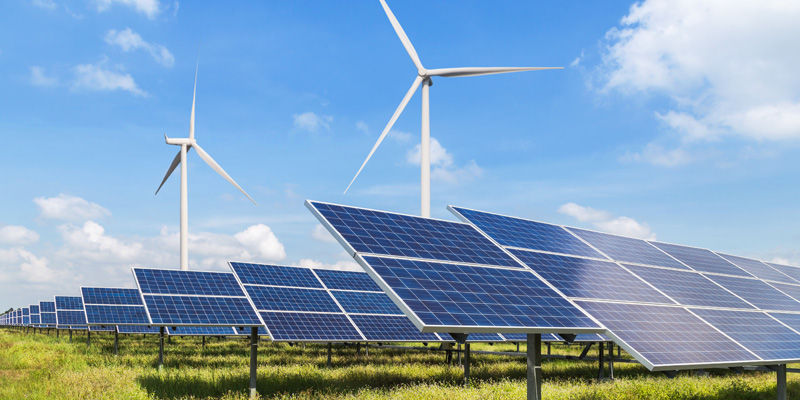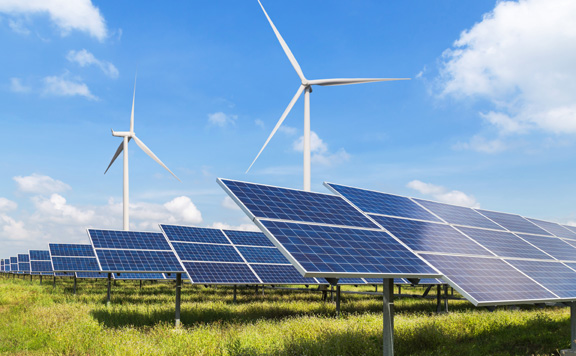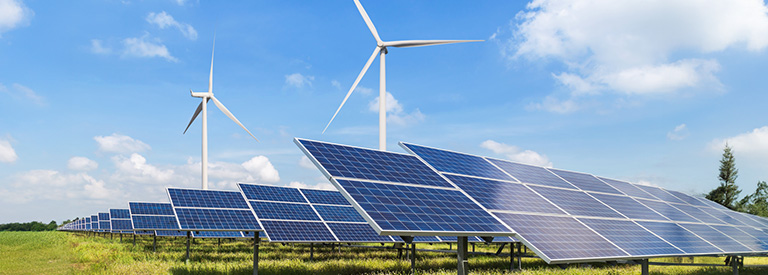What are renewable energy credits (RECs) and why do they matter?
In the growing movement toward sustainability, renewable energy credits (RECs), also known as renewable energy certificates, play a crucial yet sometimes misunderstood role. Here we break down how RECs work, why they matter and how they’re helping to drive the transition to a greener energy future.



What are renewable energy credits (RECs) and why do they matter?
In the growing movement toward sustainability, renewable energy credits (RECs), also known as renewable energy certificates, play a crucial yet sometimes misunderstood role. Here we break down how RECs work, why they matter and how they’re helping to drive the transition to a greener energy future.
These certificates function as proof that one megawatt-hour (MWh) of electricity was generated from a renewable energy source and fed into the power grid. When a renewable energy facility produces electricity, it creates both the physical electricity and a REC. The electricity goes into the grid, while the RECs can be purchased by individuals or organizations to claim the environmental benefits of that clean energy. By buying RECs, consumers support renewable energy production and can offset their own carbon footprint, even if the electricity they use comes from non-renewable sources.
RECs are a cornerstone of the clean energy economy. When you buy a REC, you're not purchasing the electricity itself — instead, you're investing in the environmental benefits of renewable energy. This is a powerful way for businesses to demonstrate a commitment to sustainability and for individuals who want to take steps toward a greener lifestyle. Whether you're a company aiming to meet sustainability goals or a homeowner wanting to make a difference, RECs offer a simple, impactful way to support clean energy.
RECs play a vital role in accelerating the transition to renewable energy. They help:
Purchasing RECs is one of the easiest ways to reduce your carbon footprint — no solar panels or major investments required. Whether you're a homeowner, a small business or a large corporation, RECs let you:
For example, if your household uses 12,000 kilowatt-hours (kWh) of electricity per year, buying 12 RECs (each representing 1,000 kWh of renewable energy) can offset that usage with clean power. This is especially helpful for renters or businesses that can’t install on-site renewables but still want to make a meaningful environmental impact.
To ensure transparency and prevent double-counting, RECs are tracked through certified systems. In Texas, the Electric Reliability Council of Texas (ERCOT) regulates the electricity market and, in turn, manages the REC trading program. Each REC is assigned a unique serial number and tracked from generation to retirement. This ensures that every REC is legitimate and claimed only once, providing confidence to buyers and regulators alike.
To appreciate the impact of RECs, it helps to understand where they come from. RECs are not just abstract certificates. They’re directly tied to the production of clean, renewable electricity. Whenever a generation facility produces renewably sourced energy, a REC is created to represent the environmental value of that electricity. This process ensures that each REC is backed by real, measurable renewable energy generation, making them a credible and effective tool for supporting the clean energy transition.
RECs are created when renewable energy facilities, like solar arrays or wind farms, generate electricity and feed it into the power grid. For every 1 megawatt-hour (MWh) of electricity produced, one REC is issued. In Texas, these often come from:
These RECs can be sold separately from the electricity, allowing customers anywhere to support renewable energy development.
Investing in RECs is a simple yet impactful way to support the transition to clean energy. By purchasing RECs, you help fund renewable energy projects like wind and solar farms, reduce your carbon footprint and show your commitment to sustainability. Whether you're a business, a city or an individual, RECs help you align with important environmental goals and policies. For example:
With programs like Reliant EcoShare℠ and Make It Solar, for a small monthly fee added right to your electricity bill, Reliant will purchase RECs or carbon offsets on your behalf to help reduce your overall carbon footprint. You can also enjoy 100% renewably sourced electricity plans like 100% Solar, which utilizes RECs to match 100% of your energy usage with solar-generated power.
As interest in clean energy grows, so does the market for RECs. Understanding how the REC market works can help you make informed choices about your energy impact.
The RECs market operates in 2 main segments:
Prices in both markets can fluctuate based on factors like supply and demand, policy changes and the type of renewable energy involved.
While all RECs represent renewable energy, solar renewable energy credits or certificates (SRECs) are a specific subset tied exclusively to solar power. Some states have "solar carve-outs" in their renewable portfolio standards, requiring a certain percentage of energy to come from solar sources.
These carve-outs create a separate market for SRECs, which are often more valuable due to limited supply and strong policy incentives. By mandating that a percentage of energy consumption come from specific renewable sources, like solar energy, states can:
While Texas does not currently have a solar carve-out, SRECs can still be purchased voluntarily to support solar development.
If you’re looking for a simple, flexible way to support clean energy and reduce your environmental impact, RECs might be the perfect fit. Not sure if they’re right for you? See if any of these sound familiar:
If any of these resonate with you, RECs might be the perfect next step in your clean energy journey.
At Reliant, we want to help customers support the growth of renewable energy and help reduce reliance on fossil fuels. Whether you're exploring clean energy options, investing in RECs or looking for simple ways to live more sustainably, we’ve got renewable home solutions that make it easy.
No, your electricity still comes from the grid, which includes a mix of sources. But by purchasing RECs, you ensure that an equivalent amount of renewable energy is added to the grid on your behalf.
No. RECs offset emissions from electricity use by supporting renewable generation. Carbon offsets, on the other hand, address emissions from other sources like transportation or manufacturing.
RECs are tracked through certified systems like ERCOT in Texas. Each REC has a unique ID and is monitored from creation to retirement to ensure authenticity.
Yes, RECs are widely recognized in sustainability reporting frameworks. They’re a cost-effective way to demonstrate environmental commitment.
Source:
*https://frontiergroup.org/resources/clean-energy-pathways-texas/